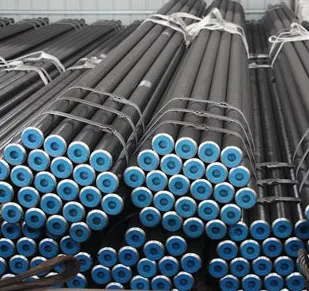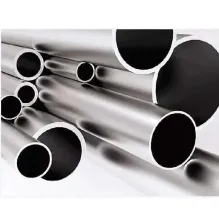-
Cangzhou Yulong Steel Co., Ltd.
-
Phone:
+86 13303177267 -
Email:
admin@ylsteelfittings.com
- English
- Arabic
- Italian
- Spanish
- Portuguese
- German
- kazakh
- Persian
- Greek
- French
- Russian
- Polish
- Thai
- Indonesian
- Vietnamese
- Zulu
- Korean
- Uzbek
- Hindi
- Serbian
- Malay
- Ukrainian
- Gujarati
- Haitian Creole
- hausa
- hawaiian
- Hebrew
- Miao
- Hungarian
- Icelandic
- igbo
- irish
- Japanese
- Javanese
- Kannada
- Khmer
- Rwandese
- Afrikaans
- Albanian
- Amharic
- Armenian
- Azerbaijani
- Basque
- Belarusian
- Bengali
- Bosnian
- Bulgarian
- Catalan
- Cebuano
- China
- China (Taiwan)
- Corsican
- Croatian
- Czech
- Danish
- Esperanto
- Estonian
- Finnish
- Frisian
- Galician
- Georgian
- Kurdish
- Kyrgyz
- Lao
- Latin
- Latvian
- Lithuanian
- Luxembourgish
- Macedonian
- Malgashi
- Malayalam
- Maltese
- Maori
- Marathi
- Mongolian
- Myanmar
- Nepali
- Norwegian
- Norwegian
- Occitan
- Pashto
- Dutch
- Punjabi
- Romanian
- Samoan
- Scottish Gaelic
- Sesotho
- Shona
- Sindhi
- Sinhala
- Slovak
- Slovenian
- Somali
- Sundanese
- Swahili
- Swedish
- Tagalog
- Tajik
- Tamil
- Tatar
- Telugu
- Turkish
- Turkmen
- Urdu
- Uighur
- Welsh
- Bantu
- Yiddish
- Yoruba

Feb . 15, 2025 16:23 Back to list
BS10 THREADED TABLE D/E/F/H
Flanges are essential components in many industrial sectors, serving as the connective hubs that link pipes, valves, pumps, and other equipment, ensuring the smooth flow and control of fluids. With a myriad of types available, each suited for specific applications, selecting the right flange is crucial for optimizing performance and safety. This article delves into the various types of flanges, offering insights into their unique features, applications, and best practices for selection.
Lap joint flanges are used in conjunction with a stub end and find their niche in applications requiring frequent dismantling for inspection or cleaning. Their design enables easy maneuverability as the flange is not permanently affixed to the pipe but loosely placed over the stub end. While they are not suitable for high-pressure environments due to their low mechanical strength, lap joint flanges offer excellent flexibility and are cost-effective, especially when made of more economical materials. Threaded flanges represent another important category, seamlessly attaching to pipes through threads rather than welding. Suitable for small diameters and low-pressure applications, threaded flanges are ideal for situations where welding is hazardous or impractical. Their ease of installation and removal makes them a preferred choice in plumbing and gas line systems, where rapid assembly and disassembly are critical. Finally, the orifice flange distinguishes itself with integral orifice plates, used primarily in flow metering systems. Often found in chemical and oil refineries, this flange type provides an accurate and reliable way to measure fluid flow rates through pipelines, ensuring proper system monitoring and control. When selecting a flange type, key considerations should include the design pressure and temperature, material compatibility with the fluid media, and the ease of assembly and maintenance. Adhering to relevant industry standards, such as ASME, API, and ISO, is essential to ensure the flange chosen meets the required safety and performance benchmarks. In conclusion, understanding the nuances of various flanges can significantly impact the efficiency and safety of piping systems. By leveraging expertise and aligning with recognized standards, businesses can make informed decisions, thereby enhancing system integrity and operational reliability across diverse industrial applications.


Lap joint flanges are used in conjunction with a stub end and find their niche in applications requiring frequent dismantling for inspection or cleaning. Their design enables easy maneuverability as the flange is not permanently affixed to the pipe but loosely placed over the stub end. While they are not suitable for high-pressure environments due to their low mechanical strength, lap joint flanges offer excellent flexibility and are cost-effective, especially when made of more economical materials. Threaded flanges represent another important category, seamlessly attaching to pipes through threads rather than welding. Suitable for small diameters and low-pressure applications, threaded flanges are ideal for situations where welding is hazardous or impractical. Their ease of installation and removal makes them a preferred choice in plumbing and gas line systems, where rapid assembly and disassembly are critical. Finally, the orifice flange distinguishes itself with integral orifice plates, used primarily in flow metering systems. Often found in chemical and oil refineries, this flange type provides an accurate and reliable way to measure fluid flow rates through pipelines, ensuring proper system monitoring and control. When selecting a flange type, key considerations should include the design pressure and temperature, material compatibility with the fluid media, and the ease of assembly and maintenance. Adhering to relevant industry standards, such as ASME, API, and ISO, is essential to ensure the flange chosen meets the required safety and performance benchmarks. In conclusion, understanding the nuances of various flanges can significantly impact the efficiency and safety of piping systems. By leveraging expertise and aligning with recognized standards, businesses can make informed decisions, thereby enhancing system integrity and operational reliability across diverse industrial applications.
Latest news
-
ANSI 150P SS304 SO FLANGE
NewsFeb.14,2025
-
ASTM A333GR6 STEEL PIPE
NewsJan.20,2025
-
ANSI B16.5 WELDING NECK FLANGE
NewsJan.15,2026
-
ANSI B16.5 SLIP-ON FLANGE
NewsApr.19,2024
-
SABS 1123 FLANGE
NewsJan.15,2025
-
DIN86044 PLATE FLANGE
NewsApr.19,2024
-
DIN2527 BLIND FLANGE
NewsApr.12,2024
-
JIS B2311 Butt-Welding Fittings LR/SR 45°/90° /180°Seamless/Weld
NewsApr.23,2024











